
by Scott Bronstad | May 18, 2021 | New Device Support, News, Technology
BPM Releases First-In-Family Support For Cypress Automotive MCU
First major programmer to support Cypress (Infineon) Traveo™ II for Automotive Body CYT2B78CADQ0AZEGS
 BPM is pleased to announce 9th Generation support for the Infineon/Cypress Automotive MCU (Microcontroller) CYT2B78CADQ0AZEGS. BPM is the only company among our major competitors (Data I/O, DediProg, Elnec, etc.) that currently provides programming for this device. The Traveo II family is connected-car-ready with the high-performance CPU. Traveo II provides great connectivity capabilities like CAN FD, CXPI, Ethernet, and FlexRay for faster communication and increased data bandwidth.
BPM is pleased to announce 9th Generation support for the Infineon/Cypress Automotive MCU (Microcontroller) CYT2B78CADQ0AZEGS. BPM is the only company among our major competitors (Data I/O, DediProg, Elnec, etc.) that currently provides programming for this device. The Traveo II family is connected-car-ready with the high-performance CPU. Traveo II provides great connectivity capabilities like CAN FD, CXPI, Ethernet, and FlexRay for faster communication and increased data bandwidth.
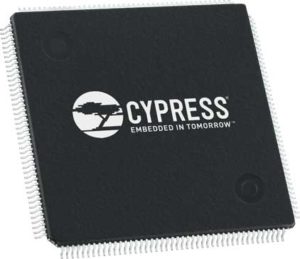
CYT2B78CADQ0AZEGS Traveo™ II Automotive MCU
Manufacturer: Cypress
- Part Number: CYT2B78CADQ0AZEGS
- 8-bit Bytes: 335642624
- Memory Regions: 1000 0000h-1010 FFFFh
- Vcc(program): 3.3
- Electrical Erase: Yes
- Set programming: Yes
- Packages: TQFP(176)
- 9th Gen Socket Solution: FVE2ASM176LQFPC
- Available on BPM’s Process software BPWin Versions released after 05/4/2021
Unique Support
As of publication, BPM has the only supported solution for this particular automotive MCU. Cypress devices currently supported by BPM stand at 1,999. Infineon devices currently supported by BPM stand at 203.
| |
Supported* |
Socket |
| Elnec |
No |
|
| Data I/O |
No |
|
| System General |
No |
|
| Xeltek |
No |
|
| Dediprog |
No |
|
| BPM |
Yes |
FVE2ASM176LQFPC |
*As of publication
9th Gen
9th Generation Site Technology delivers the fastest programming times, 2 to 9 times faster for flash devices. Vector Engine™ Co-processing with BitBlast offers the fastest programming speeds in the industry, vastly increasing throughput for automotive MCUs.
BPWin Software Support
In order to fully take advantage of new device support from BPM Microsystems, you’ll need a version of BPWin after 05/04/2021. New programmers come with one year of software support; if your software contract has lapsed, please contact Inside Sales to take advantage of daily additions and improvements in device support.
Device Search Socket Decoder Types of Programmables
Number of Devices Supported by 9th Gen
Complete Ecosystem
BPM Microsystems has ownership of all designs, manufacturing, and support for all programming sites, robotics, vision systems, and software, so we can provide unmatched support and responsiveness
- Reduce your time to market by doing New Product Introduction/First Article through Automated Production with the same hardware, algorithms, and software
9th Generation Site Technology
Manual Programmers for this Device
Available for purchase in North America (US/Canada/Mexico)
2900L Manual Programmer with Actuator
2900 9th Gen Manual Programmer
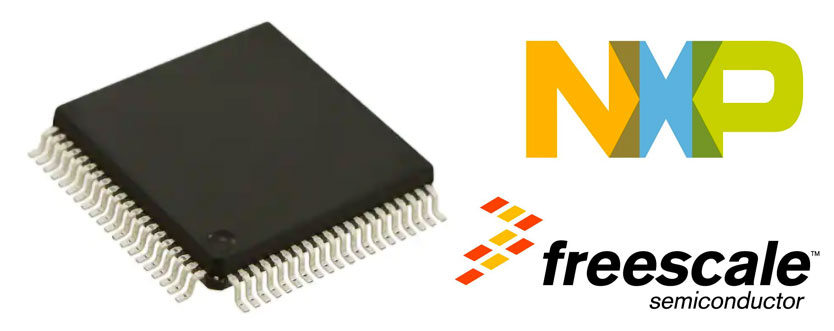
by Scott Bronstad | Apr 30, 2021 | New Device Support, News, Technology
BPM Releases Support For NXP Industrial/Automotive MCU
MXP (Freescale) MC9S12DJ64CFU for Automotive and Industrial Applications
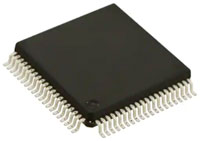 BPM is pleased to announce 9th Generation support for the NXP Industrial/Automotive MCU (Microcontroller) MC9S12DJ64CFU. This flash device is used primarily in small engine automotive applications, but also Industrial, Mobile, and Smart Home. BPM is the only company among our major competitors that currently provides programming for this device.
BPM is pleased to announce 9th Generation support for the NXP Industrial/Automotive MCU (Microcontroller) MC9S12DJ64CFU. This flash device is used primarily in small engine automotive applications, but also Industrial, Mobile, and Smart Home. BPM is the only company among our major competitors that currently provides programming for this device.
According to MXP, the MC9S12D is a 16-bit MCU composed of standard on-chip peripherals, including:
- Two asynchronous serial communications interfaces
- 8-channel IC/OC enhanced capture timer
- Two 8-channel, 10-bit analog-to-digital converters (ADC)
- 8-channel pulse-width modulator (PWM)
which is designed for (Automotive) Motorcycle Engine Control Unit (ECU) and Small Engine Control, (Industrial) Anesthesia Unit Monitor, Electricity Grid and Distribution, Gas Meter, Home Health Gateway, Powered Patient Beds, Smart Power Socket and Light Switch & Water Meter; (Mobile) Hearables, Input Device (Mouse, Pen, Keyboard), Wireless Charging Pad & Wristbands. See more here.
- Package: HQFP(80)
- Category: MCU
- Detailed Description: HCS12 series Microcontroller IC 16-Bit 25MHz 64KB (64K x 8) FLASH 80-QFP (14×14)
- 16-bit words: 2056192
- Memory Regions: 0h-3FFh; 2000h-3FFFh; 6000h-7FFFh; 1E 4000h-1E 5FFFh; 1E C000h-1E DFFFh; 1F 4000h-1F 5FFFh
- Vcc(program): 4.5
- Electrical Erase: Yes
- Secure: Read and Program
- Set programming: Yes
- 9th Gen Socket Solution: FVE2ASMR80QFCM
- Available on BPM’s Process software BPWin Versions released after 01/14/2021
Unique Support
As of publication, BPM has the only supported solution for this particular device. Freescale devices currently supported by BPM stand at 3,223. NXP devices currently supported by BPM stand at 650.
| |
Supported* |
Socket |
| Elnec |
No |
|
| Data I/O |
No |
|
| Dediprog |
No |
|
| BPM |
Yes |
FVE2ASMR80QFCM |
*As of publication
9th Gen
9th Generation Site Technology delivers the fastest programming times, 2 to 9 times faster for flash devices. Vector Engine™ Co-processing with BitBlast offers the fastest programming speeds in the industry, vastly increasing throughput.
BPWin Software Support
In order to fully take advantage of new device support from BPM Microsystems, you’ll need a version of BPWin after 1/14/2021. New programmers come with one year of software support; if your software contract has lapsed, please contact Inside Sales to take advantage of daily additions and improvements in device support.
Number of Devices Supported by 9th Gen
Manual Programmers for this Device
Available for purchase in North America (US/Canada/Mexico)
2900L Manual Programmer with Actuator
2900 9th Gen Manual Programmer

by Scott Bronstad | Apr 21, 2021 | New Device Support, New Product, News
BPM Releases Support For Renesas Automotive Microcontroller
Renesas R7F7015433AFP-C for Automotive Electrical Body Applications
The RH850/F1K is one group of single-chip microcontrollers in the RH850/F1x series which is designed for automotive electrical body applications. While it achieves low power consumption, the internal flash memory ranges from 768KB to 2MB and the package covers a wide range from 100 to 176 pins. Also, a CAN FD interface has been added (premium products only) and the CPU operating frequency has been improved to 120MHz. See more here.
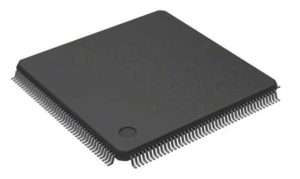 Packages: QFP(144)
Packages: QFP(144)- Category: MCUs and MPUs – RH850 Family (Automotive only) – RH850/F1K
- Device Type: 32-bit G3M CPU core
- Device Size: 2MBytes Code Flash + 32KBytes User Area + 64KBytes Data Flash
- Algorithm Programming Method: 3-Wire Serial I/O Mode
- 9th/8th Gen Socket Solution: FVE2ASM144LQFPA
- Available on BPM’s Process software BPWin Versions released after 01/14/2021
- Note: Replaceable burn-in test socket
Unique Support
As of publication, BPM has the only supported solution for this particular device. Renesas devices currently supported by BPM stand at 1,762.
| |
Supported* |
Socket |
| Elnec |
No |
|
| Data I/O |
No |
|
| Dediprog |
No |
|
| BPM |
Yes |
FVE2ASM144LQFPA |
*As of publication
9th Gen
9th Generation Site Technology delivers the fastest programming times, 2 to 9 times faster for flash devices. Vector Engine Co-processing with BitBlast offers the fastest programming speeds in the industry, vastly increasing throughput.
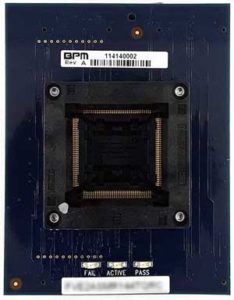 BPM Advantages
BPM Advantages
The socket card (FVE2ASM144LQFPA) is built with a replaceable burn-in test socket. This means when the socket wears out, simply remove it and replace it with LSOCQ144EA-2, rather than replacing the whole socket card (adapter). This socket allows for up to 2 devices to be programmed in parallel and will work with both manual and automated systems on 9th and 8th Gen systems.
BPWin Software Support
In order to fully take advantage of new device support from BPM Microsystems, you’ll need a version of BPWin after 1/14/2021. All engineering manual programmers (they start with a “1” such as the 1710) come with lifetime software support. New programmers come with one year of software support; if your software contract has lapsed, please contact Inside Sales to take advantage of daily additions and improvements in device support.
Number of Devices Supported by 9th Gen

by Scott Bronstad | Mar 31, 2021 | News, Video
Tape-In
The X-Stream Series Tape Feeder System is the reliable, precise automated tape input peripheral for the BPM Microsystems automated programming systems. The X-Stream Series offers a broad range of carrier tape sizes, from 8 to 56mm. Tightly coupled with BPWin™ process control software, the X-Stream Series intelligently advances the feeder on command, ensuring the feeder presents the next device as needed.
The X-Stream Series provides easy setup and fast changeover. Intuitive buttons control tape advance and reverse for simple pick point adjustment and calibration. Each feeder body includes an input reel holder, accommodating reels up to 15 inches in diameter. An ergonomic handle eases operator handling and installation.
Small CSP package handling requires smooth indexing, accuracy, and repeatability. The 8mm and 12mm X-Stream Series feeders are specially engineered to include a pick window with a spring-loaded insert. This stabilizes vibration by applying downward pressure to the carrier tape, resulting in the precise presentation of small components to the APS nozzle.
Designed for high-speed pick and place machines, X-Stream Series feeders are robust with minimal service requirements. If an unexpected error does occur, the onboard diagnostics feature and electronic calibration make troubleshooting fast and easy.
V-TEK TM-50 MK2 Tape Output Machine
Large, small, or difficult-to-place parts are easy to tape with V-TEK’s TM-50. The microprocessor-controlled sealer and stepper motor drive assure precise handling of all taping parameters. Several advance speeds are selectable to accommodate problem parts and to minimize jumping. The innovative set up and change-over design allow an operator to change over carrier and cover tapes in minutes. BPM’s TM-50 MK2 has more sensors than other APS suppliers for maximum throughput and minimum errors.
Flexible, easy-to-use, menu-driven software and advanced electronic characteristics make the TM-50 a perfect choice for your taping needs.
Now available with a side-mount option for the V-TEK TM50. This configuration offers additional flexibility by allowing the machine to utilize options for tape, tray, tube, and marking simultaneously. The V-Tek TM-50 is compatible with both 3000 and 4000 series APS.
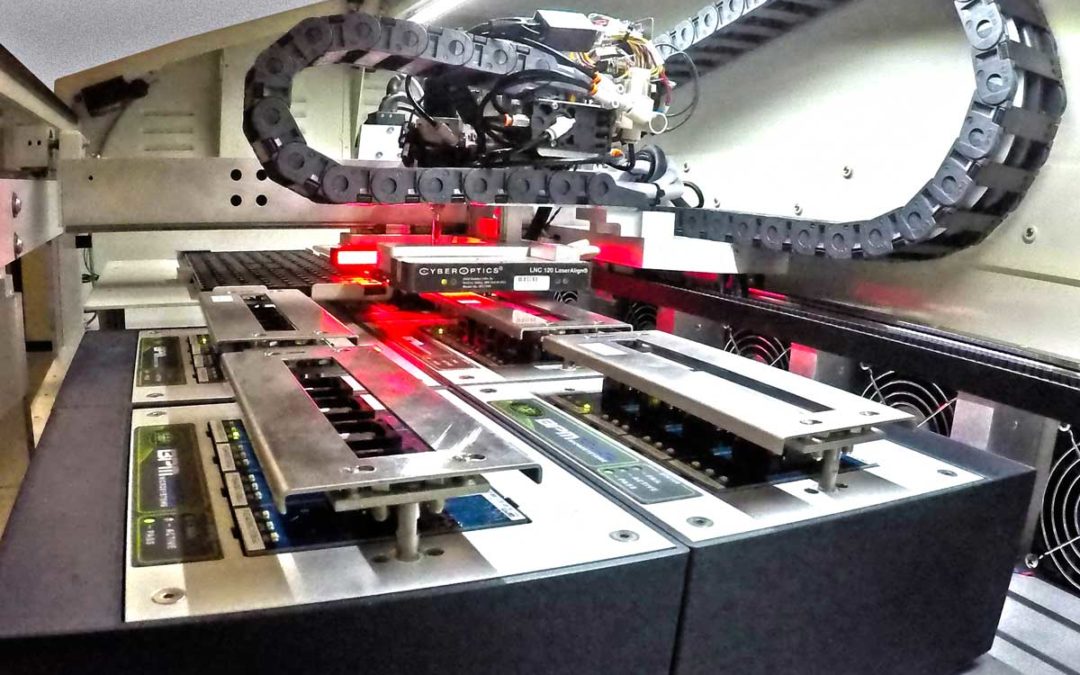
by Scott Bronstad | Mar 18, 2021 | Announcements, News
In the year that will be forever remembered for a global pandemic and world-wide business shut-downs, BPM enjoyed a 300% year-over-year installation growth for automated programming systems. “2020 was an exceptional year in many respects”, says William White, Founder, and CEO at BPM Microsystems. “I am really proud of the way our team delivers the solutions our customers need while operating under the constraints of the pandemic. Uncertainty in the first half of the year was followed by strength from multiple sectors. Ending the year with increasing revenue and profitability is a testament to the resilience of our customers and our team. Business cycles come and go, but we remain positive about the future, and are positioned to have a strong 2021.” BPM ended 2020 with an overall sales growth of 23% compared to 2019.
Automated Programmers Driving Installation Growth
BPM attributes much of the growth to two major product launches in late 2019. The 3901 Automated Programmer is touted as a low-cost, full-featured small footprint APS; it comes standard with 2-sites/8 sockets for under $90K in most markets. The 3928 Automated Programming System is rated at 1,432 Devices per hour with up to 28 sockets– 75% more capacity than the 3901. It is the only mid-sized automated programmer in the world that is fully-configurable with all peripherals, including automotive-level 3D Inspection.
WhisperTeach™
Both the 3901 and 3928 feature WhisperTeach, the patented, award-winning automated Z-Teach process that delivers faster set-ups, better accuracy, and repeatable high-quality programming, critical for modern devices. BPM’s nearest competitor does not offer auto Z-Teach in their comparable platform.
Manual Programmer Revenue Growth
BPM also experienced 269% year-over-year sales growth in Manual Programmer revenue. Penny Santhanam, Director of Customer Care, says, “It’s exciting to see the growth in our Manual Programmers. Our team built great relationships with several Defense suppliers and OEMs and won a majority of deals we quoted.” A major contributor to almost tripling manual programmer sales was the launch of the Silicon Sculptor 4, sold exclusively by Microsemi. The SS4 is based on BPM’s 9th Gen site technology, providing a boost in programming speeds while maintaining the critical quality of some of the world’s most valuable (and challenging) mission-critical programmable devices. BPM is Microsemi’s exclusive designer and manufacturer for the Silicon Sculptor series and has been for more than 20 years.
BPM’s proven 9th Generation Programming Technology delivers the fastest and most universal programming solution on the market. BPM’s global service and support network serve the demanding requirements of mission-critical installations across six continents.
The Software and Device Support teams are growing to meet increasing demands, with the Device Support team doubling in size from this time last year. Jon Bondurant, Chief Operations Officer, says, “We were cautiously optimistic in early 2020, but things really picked up when COVID-related projects started coming in– digital thermometers and other medical devices. By year-end, pent-up global demand is keeping us pretty busy.”
Read US Tech Article
BPM Microsystems started in 1985 out of a dorm room at Rice University. 36 years later, they have installed more fine-pitch programmers than all other companies worldwide combined. They design and manufacture all of their products in their ISO 9001 manufacturing facility in Houston, Texas. To find out how bringing device programming in-house improves quality, reduces time to market, and cuts cost, call +1 713.263.3776 or Toll-Free in the US or Canada at (855) SELL BPM.
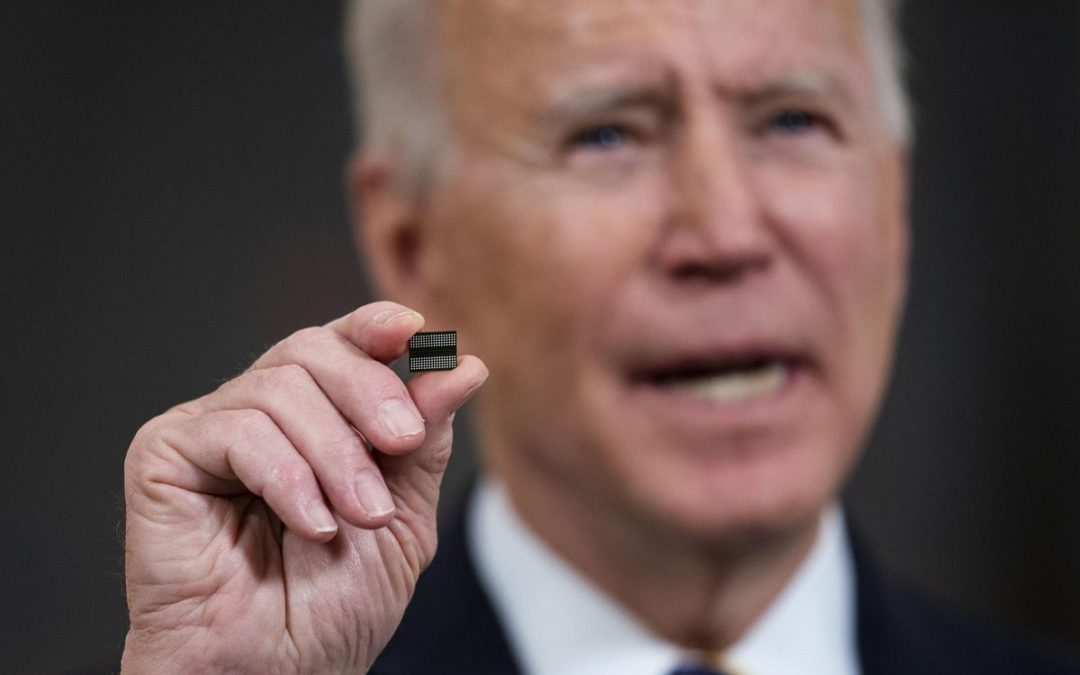
by Scott Bronstad | Mar 8, 2021 | Announcements, News, Technology
In an article published in Forbes on February 25, President Joe Biden signed “Executive Order on America’s Supply Chains” to address the global semiconductor chip shortage. Designed as a 100-day review of supply chain effectiveness, and citing that the United States accounts for 12.5% of semiconductor manufacturing, this Executive Order is a part of a continuous stream of policy assuming that “made in America” is good for America.
According to a new Reuters article, here are some updates on the on-going global chip shortage.
GM has extended production cuts at four of their North American plants due to chip shortage. It’s being reported that the shortage could cut up to $2 Billion from their 2021 forecast.
The shortage is hitting production of the most popular truck in the world: F-150 pickup trucks. Ford could lose 10% to 20% of planned first-quarter vehicle production.
The chip shortage will impact production at Wolfsburg and Kassel plants. VW was the first major automaker to announce that chip shortages were affecting production. Volkswagen is the world’s second-largest car company (behind Toyota).
The chip shortage could reduce Renault production by about 100,000 vehicles this year. Renault is a French automaker.
Honda has announced a cut in its 2021 sales target by 100,000 vehicles due to the chip shortage. Honda is fifth in sales worldwide.
Nissan, Japan’s third-largest automaker and #10 in the world have lowered its target by 150,000 vehicles due to the chip shortage.
Elon Musk said Tesla’s plant in Fremont, California shut down for two days in February due to “parts shortages”.
Automotive Suppliers
Visteon, a major automotive component supplier, has said uncertainty around the semiconductor shortages will lead to some plant closures in the first half of 2021 before things stabilize in the third and fourth quarters.
Stellantis‘ factories in Germany and Spain were impacted due to the programmable device shortage. Union sources told Reuters in February that Stellantis planned to slow production at its plant in Italy, and furlough 7,000 workers. Stellantis’ supported brands include Alfa Romero, Chrysler, Dodge, Jeep, Ram, Fiat, and Opel.
Other Industries
Sony’s Chief Finacial Officer Hiroki Totoki said it is difficult for the company to increase the production of the popular gaming system, the PS5, amid the shortage of semiconductors. The PS5 launched in November of 2020, and is one of the most popular systems in the world.

 BPM is pleased to announce 9th Generation support for the Infineon/Cypress Automotive MCU (Microcontroller) CYT2B78CADQ0AZEGS. BPM is the only company among our major competitors (Data I/O, DediProg, Elnec, etc.) that currently provides programming for this device. The Traveo II family is connected-car-ready with the high-performance CPU. Traveo II provides great connectivity capabilities like CAN FD, CXPI, Ethernet, and FlexRay for faster communication and increased data bandwidth.
BPM is pleased to announce 9th Generation support for the Infineon/Cypress Automotive MCU (Microcontroller) CYT2B78CADQ0AZEGS. BPM is the only company among our major competitors (Data I/O, DediProg, Elnec, etc.) that currently provides programming for this device. The Traveo II family is connected-car-ready with the high-performance CPU. Traveo II provides great connectivity capabilities like CAN FD, CXPI, Ethernet, and FlexRay for faster communication and increased data bandwidth.
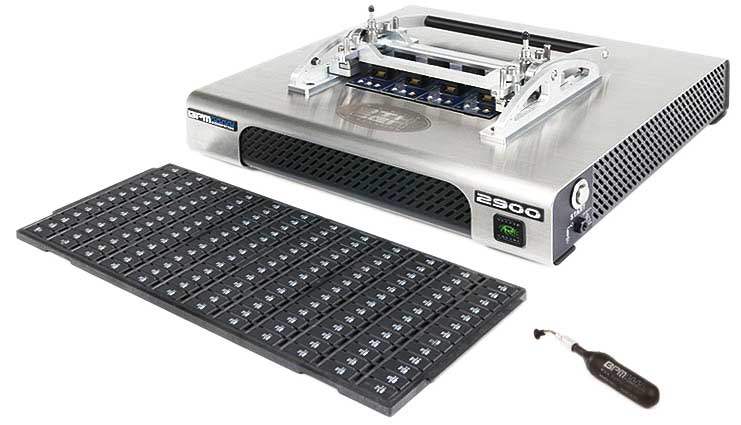
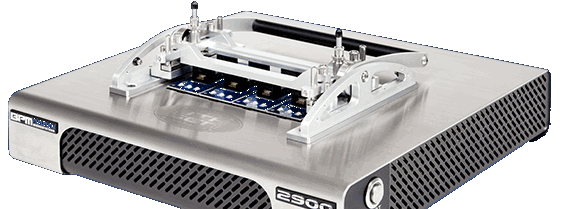
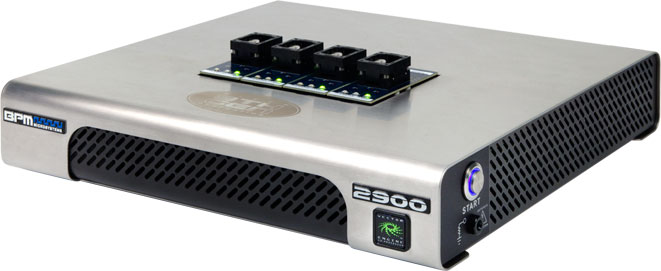



 Packages: QFP(144)
Packages: QFP(144) BPM Advantages
BPM Advantages

